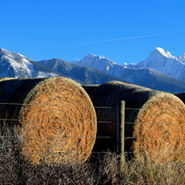

Roald Fryxell: My spirit animal
All-around geologist, climber, and educator Roald Hilding Fryxell in Levis on Eagles Rest Peak, Teton Range. WY c. 1953. Son of Fritiof...


Repeated Soft Sediment Deformation - Lake Rufus Woods, WA
Shear stress at the base of the overriding flow is transmitted to the substrate, forming these structures. Soupy and clay-rich substrate...


Periglacial Soil Wedges East of Glacier National Park
Brown soil wedges follow polygonal crack networks in fine grained sediment (lakebeds) south of Browning, MT. The features formed during...










